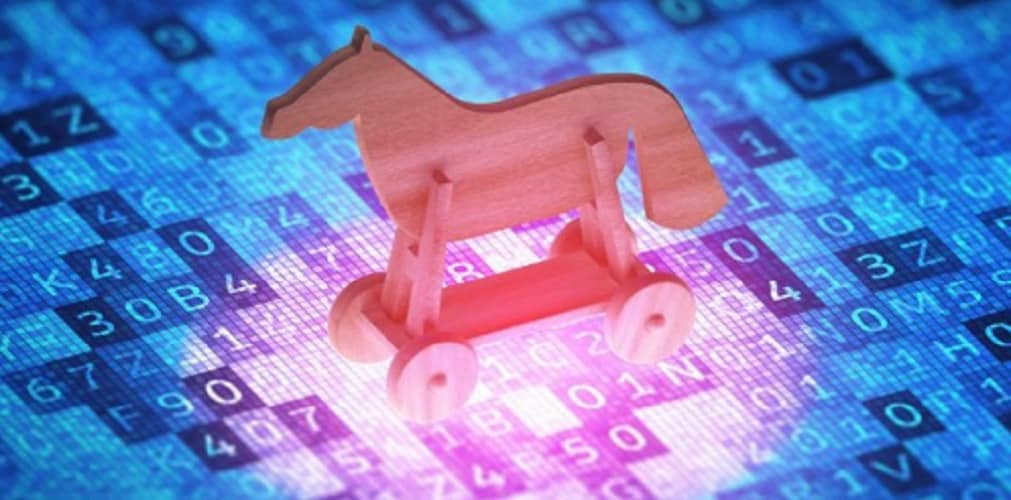What is malware?
We explain what malware is and the types of malware that exist. Also, where does it come from and how to protect ourselves from this software.
-
What is malware?
In computing it is meant by malware (contraction in English maliciou s software , ie “malware”) to the different forms of software malicious aimed infiltrate a computer system and once to carry out a series of covert activities , ranging from sabotage of the system itself, the theft of confidential data, the appropriation of its computer resources and / or the contagion of other systems that may be networked.
These types of harmful programs made their appearance during the 1980s , when personal computers began to become popular throughout the world, and currently they have on the Internet their favorite means of propagation, either through suspicious email ( Spam ), pages Infected websites, files shared online, etc.
The origin of malware and computer viruses may have been initially as a joke or a game, by young programmers, unaware of the damage they could cause. However, since then, harmful software has evolved and grown in illegal uses , to the point that the use of antivirus tools has become imperative .
According to reports by the F-Secure company, in 2007 both malware and the previous 20 years would have been produced, and according to Panda Security, in 2011 73,000 new computer threats were created per day, which exceeds the production of legal software with you grow up
-
Types of malware

According to its method of propagation, we can talk about various types of malware, such as:
Viruses and worms ( worms ) . It is software that invades the system and performs harmful actions, such as deleting critical components of the Operating System, after having used its resources to be sent by email or by other means, spreading the infection.
Hidden malware . These are harmful programs whose entry into the system and its performance is given silently, without the user noticing.
- Troyanos . Disguised as harmless or beneficial, these programs invite the user to run them, and then open the door to hundreds of other malicious programs.
- Backdoors . Its name in English means “back door”, as it allows third-party access to the computer system, avoiding the usual controls and communication protocols.
- Drive- by downloads . Malicious pieces of software that are automatically downloaded by certain Web pages without asking the user for authorization or allowing him to stop on time, and open the door to other forms of virtual invasion.
- Rootkits . These are techniques for modifying key files of the Operating System, to allow the malware present to remain hidden from the installed detection programs.
Malware advertising .
- Spyware . Programs that secretly collect information from pages visited on the Internet and use it to bombard us with spam.
- Adware . They work just like spyware , but showing us online advertising while we browse.
- Hijack ers . Programs “hijackers” that modify the configuration of the Internet browser, forcing it to start on a certain Web page or to display certain messages.
Information hijackers .
- Keyloggers . Programs that secretly collect user passwords and send them to an anonymous applicant, such as credit card numbers, etc.
- Stealers . Similar to keyloggers, they steal sensitive information from the user, but only what is stored on the computer.
- Dialers . Not so popular since the bulk of Internet connections are over Broadband, these programs stole phone signals and allowed illegal calls to be made remotely.
- Botnets . This is called sets of computers that respond to instructions from third parties remotely and secretly, allowing them to send spam or viruses indirectly , making it harder for the source to be traced.
- Ransomware . Various forms of software that are entered into online user accounts, modify the password and then request a ransom payment to release it.
-
Where does the malware come from?
We come in contact with malware in various ways, on high traffic sites such as pornographic networks or gambling sites , or when opening suspicious email attachments.
Mostly malware comes from China and the United States , the world’s largest software producers, or other similar nations. Occasionally these malicious programs may even come from recognized companies, concealed in their products.
A famous case has been that of the “ Windows Telemetry ” process that includes the new versions of Windows , and that is able to collect information about user habits and secretly send them to Microsoft , using system resources.
-
How to protect ourselves from malware?
 Installing an antivirus program is one of the best options to protect against malware.
Installing an antivirus program is one of the best options to protect against malware.The best option to protect yourself from malware is to install an antivirus and antimalware program on your computer , which should be up to date in your virus definitions, and to which we must grant you the necessary permissions to monitor the entry of unsolicited software to the system.
It is also useful to have the Operating System and our main applications updated, since many security updates compensate for exploitable system weaknesses by these malicious programs.
And as a measure of digital hygiene, you should avoid installing unknown software on the machine, as well as opening suspicious emails, let alone clicking on advertisements that seem too good to be true.





